The Benefits of Wallets for Non-Tech Savvy Users
In today's fast-paced world, where technology constantly evolves, it can be overwhelming for individuals who are not particularly tech-savvy. However, the emergence of digital wallets has transformed the way we handle our finances, making it easier and more secure for everyone, regardless of their technological expertise. Imagine a world where you can make purchases, track your spending, and manage your finances all from the convenience of your smartphone—this is precisely what digital wallets offer. They are not just for the tech enthusiasts; they are designed with simplicity and accessibility in mind, catering to those who may feel intimidated by technology.
Digital wallets provide a seamless experience that allows users to engage in everyday transactions without the hassle of fumbling through physical cash or multiple cards. With just a few taps, you can pay for your morning coffee, split a bill with friends, or shop online—all while ensuring your financial information remains secure. The beauty of digital wallets lies in their ability to simplify the payment process, making it feel like second nature even for those who might struggle with technology. In this article, we will explore the numerous benefits of digital wallets, focusing on how they enhance security, convenience, and financial management for non-tech savvy users.
Digital wallets are applications that securely store your payment information, allowing you to make transactions effortlessly. Think of them as a virtual version of your wallet, but with added benefits. Instead of carrying around cash or cards, you can simply use your smartphone to pay for goods and services. This not only reduces the clutter in your pocket but also streamlines the entire payment process. For non-tech savvy users, this means less stress and more confidence when it comes to managing their finances.
When it comes to handling money, security is paramount. Digital wallets offer advanced security measures that ensure your sensitive information remains protected. For individuals who may not be familiar with technology, these features provide peace of mind, allowing them to transact safely without the constant worry of fraud or theft. Let's delve into some of the key security features that make digital wallets a safe choice:
Encryption technology plays a critical role in safeguarding user data. It works by scrambling your information, making it unreadable to unauthorized parties. This protection is essential for maintaining privacy during digital transactions, especially for those who may not fully understand the intricacies of online security. With encryption, non-tech savvy users can engage in financial activities without fearing their data will be compromised.
Another layer of security is two-factor authentication. This feature requires users to provide a second form of verification, such as a code sent via text message. For non-tech savvy individuals, this extra step might seem daunting, but it significantly enhances security and helps them feel more secure when using digital wallets. It’s like having a double lock on your front door—more protection means more peace of mind.
Biometric verification simplifies the login process by utilizing fingerprint or facial recognition technology. This means that accessing your wallet is as easy as a quick scan of your finger or face, eliminating the need to remember complex passwords. For those less comfortable with technology, this user-friendly feature makes digital wallets accessible and convenient.
Setting up a digital wallet is often straightforward, requiring minimal technical knowledge. Most wallets offer guided instructions, making it easy for users to get started. This simplicity encourages adoption among non-tech savvy individuals, allowing them to manage their finances effortlessly. Imagine being able to set up your wallet in just a few minutes and immediately start enjoying the benefits—this is the reality for many users today.
One of the standout features of digital wallets is their ability to streamline payment processes. Users can complete transactions quickly and efficiently, which is especially beneficial for those who prefer simplicity over navigating complex payment systems. With digital wallets, you can enjoy a hassle-free experience that saves time and reduces stress.
Contactless payment options are a game-changer. With just a tap of your device at a terminal, you can pay for your purchase without the need for cash or cards. This feature not only speeds up transactions but also appeals to non-tech savvy users who appreciate the ease and efficiency of contactless payments. It’s like magic—one moment you're standing in line, and the next, you're on your way with your purchase in hand!
Digital wallets allow users to store various payment methods, such as credit cards and bank accounts, all in one place. This centralization simplifies managing finances and enhances the user experience. No more digging through your wallet to find the right card—everything you need is just a tap away. This convenience can be particularly beneficial for non-tech savvy individuals who may find it challenging to keep track of multiple cards and accounts.
Many digital wallets come equipped with features for budgeting and expense tracking, making it easier for users to manage their finances effectively. This functionality is invaluable for non-tech savvy individuals looking to improve their financial literacy. By utilizing these tools, users can gain insights into their spending habits and make informed decisions about their finances.
Some digital wallets offer options to set spending limits, allowing users to control their expenses. This feature encourages responsible spending habits and helps users stick to their budgets. For those who may struggle with financial discipline, this tool acts as a safety net, ensuring they don’t overspend.
Access to transaction history is another valuable feature. It helps users track their spending patterns and understand their financial habits better. For non-tech savvy individuals, having a clear view of their transactions can be crucial for making informed decisions and planning for future expenses. It’s like having a financial diary that keeps you accountable!
- What is a digital wallet? A digital wallet is an application that securely stores your payment information, allowing you to make transactions without physical cash or cards.
- Are digital wallets safe to use? Yes, digital wallets offer advanced security features like encryption and biometric verification to protect your sensitive information.
- How do I set up a digital wallet? Setting up a digital wallet is usually straightforward, requiring minimal technical knowledge. Most wallets provide guided instructions.
- Can I track my spending with a digital wallet? Yes, many digital wallets include budgeting and expense tracking features to help you manage your finances effectively.

Understanding Digital Wallets
This article explores the advantages of using wallets for individuals who may not be familiar with technology, highlighting ease of use, security, and accessibility in daily transactions.
Digital wallets are innovative applications that have revolutionized the way we handle money. Imagine having all your payment information securely stored in one place, accessible at your fingertips! These wallets allow you to make transactions without the hassle of carrying physical cash or cards. With just a few taps on your smartphone, you can pay for groceries, split bills with friends, or even shop online without breaking a sweat. This simplicity is especially beneficial for those who might feel overwhelmed by traditional banking methods or complex payment systems.
One of the standout features of digital wallets is their user-friendly interface. Most wallets are designed with non-tech savvy individuals in mind, making it easy for anyone to navigate through their options. For example, you can easily add your credit or debit card information, link your bank account, or even store loyalty cards—all in one centralized location. This not only streamlines the payment process but also enhances overall financial management.
Additionally, digital wallets often come equipped with features that cater to various user needs. Here are some common functionalities you can expect:
- Secure Payment Processing: Transactions are processed quickly and securely, giving users peace of mind.
- Accessibility: Users can access their wallets anytime and anywhere, making it incredibly convenient for on-the-go payments.
- Integration with Other Apps: Many digital wallets can be linked with budgeting or shopping apps, further simplifying your financial life.
In essence, digital wallets are designed not just for tech enthusiasts but for everyone. They break down the barriers of traditional payment methods, allowing users to embrace technology without feeling intimidated. So, if you’ve ever thought about giving a digital wallet a try, now might be the perfect time to jump in!
Wallets offer advanced security measures like encryption and biometric authentication. These features protect sensitive information, ensuring that non-tech savvy users can transact safely without worrying about fraud or theft.
Encryption technology ensures that user data is scrambled and unreadable to unauthorized parties. This protection is crucial for maintaining privacy and security in digital transactions, especially for those unfamiliar with tech.
Two-factor authentication adds an extra layer of security by requiring a second form of verification, like a text message code. This helps non-tech savvy users feel more secure when using digital wallets.
Biometric verification, such as fingerprint or facial recognition, simplifies the login process. It allows users to access their wallets quickly and securely, making it user-friendly for those less comfortable with technology.
Setting up a digital wallet is often straightforward, requiring minimal technical knowledge. This ease of use encourages adoption among non-tech savvy individuals, allowing them to manage their finances effortlessly.
Digital wallets streamline payment processes, allowing users to complete transactions quickly. This convenience is especially beneficial for those who prefer simplicity over navigating complex payment systems.
Contactless payment options enable users to pay by simply tapping their device at a terminal. This feature is not only fast but also reduces the need for physical cash, appealing to non-tech savvy users.
Digital wallets allow users to store various payment methods, such as credit cards and bank accounts, in one place. This centralization simplifies managing finances and enhances the user experience.
Many wallets include features for budgeting and expense tracking, helping users manage their finances more effectively. This functionality is particularly valuable for non-tech savvy individuals looking to improve their financial literacy.
Some digital wallets offer options to set spending limits, allowing users to control their expenses. This feature encourages responsible spending habits, making it easier for users to stick to their budgets.
Access to transaction history helps users track their spending patterns. This information can be vital for non-tech savvy individuals aiming to understand their financial habits and make informed decisions.
Q: What is a digital wallet?
A: A digital wallet is an application that securely stores payment information, allowing users to make transactions without physical cash or cards.
Q: Are digital wallets safe to use?
A: Yes, digital wallets come equipped with advanced security features such as encryption and biometric authentication to protect user data.
Q: How do I set up a digital wallet?
A: Setting up a digital wallet is usually straightforward. You need to download the app, create an account, and link your payment methods.
Q: Can I use a digital wallet for online shopping?
A: Absolutely! Digital wallets can be used for both in-store and online transactions, making them versatile for everyday use.
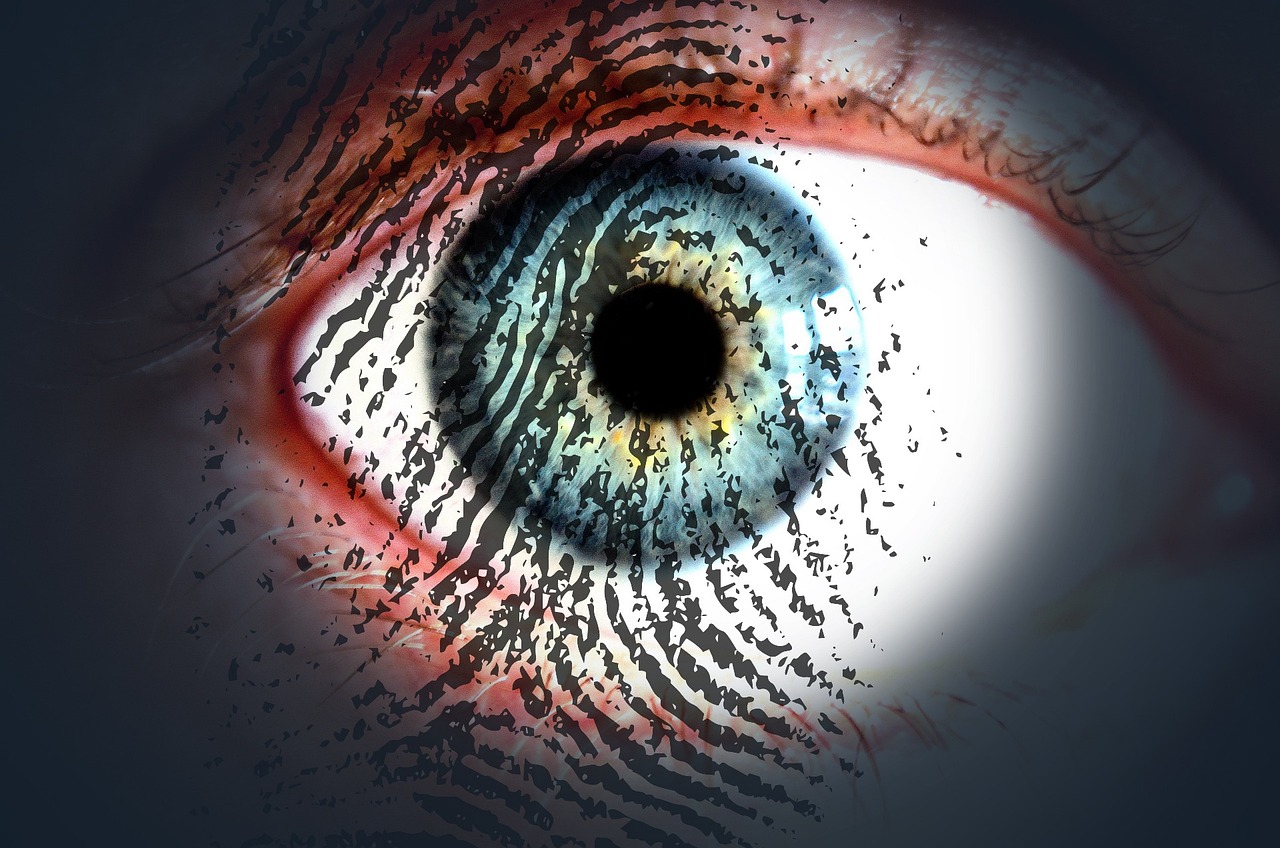
Enhanced Security Features
In today's digital age, security is a top priority for everyone, especially for those who may not be as tech-savvy. Digital wallets have stepped up their game by incorporating advanced security features that provide peace of mind for users. These features not only protect sensitive information but also make transactions smoother and safer. Let's dive into some of the key security measures that make digital wallets a trustworthy option for all users.
At the heart of digital wallet security lies encryption technology. This sophisticated method scrambles user data into a format that is unreadable to anyone without the right decryption key. Imagine sending a secret message to a friend, where only the two of you have the key to unlock its meaning. This is exactly how encryption works, ensuring that your financial information remains confidential and secure. For non-tech savvy individuals, this means that even if a hacker were to intercept the data, they would find nothing but gibberish.
Another layer of security that digital wallets offer is two-factor authentication (2FA). This process requires users to verify their identity through a second method, such as a text message code sent to their phone. Think of it as a double lock on your front door—just having the key isn’t enough; you also need to enter a code. This extra step significantly reduces the risk of unauthorized access, making it a vital feature for those who may not be familiar with more complex security protocols.
For those who find passwords daunting, biometric verification is a game-changer. Utilizing fingerprint or facial recognition, this technology allows users to access their wallets quickly and securely. It’s like having a personal bouncer for your finances—only you can get in! This feature not only enhances security but also simplifies the login process, making it incredibly user-friendly for individuals who may struggle with traditional password systems.
Overall, the enhanced security features of digital wallets create a safe environment for non-tech savvy users. By implementing encryption, two-factor authentication, and biometric verification, these wallets ensure that users can engage in transactions without the constant fear of fraud or theft. The combination of these technologies allows individuals to focus on enjoying the convenience of digital payments rather than worrying about their safety.
- What is a digital wallet? A digital wallet is an application that securely stores payment information, allowing users to make transactions without carrying physical cash or cards.
- How secure are digital wallets? Digital wallets use advanced security features like encryption, two-factor authentication, and biometric verification to protect user data.
- Can I access my digital wallet easily? Yes! Digital wallets are designed for ease of use, with simple setup processes and user-friendly interfaces.
- What if I forget my password? Most digital wallets offer recovery options, including biometric access or security questions, to help you regain access.
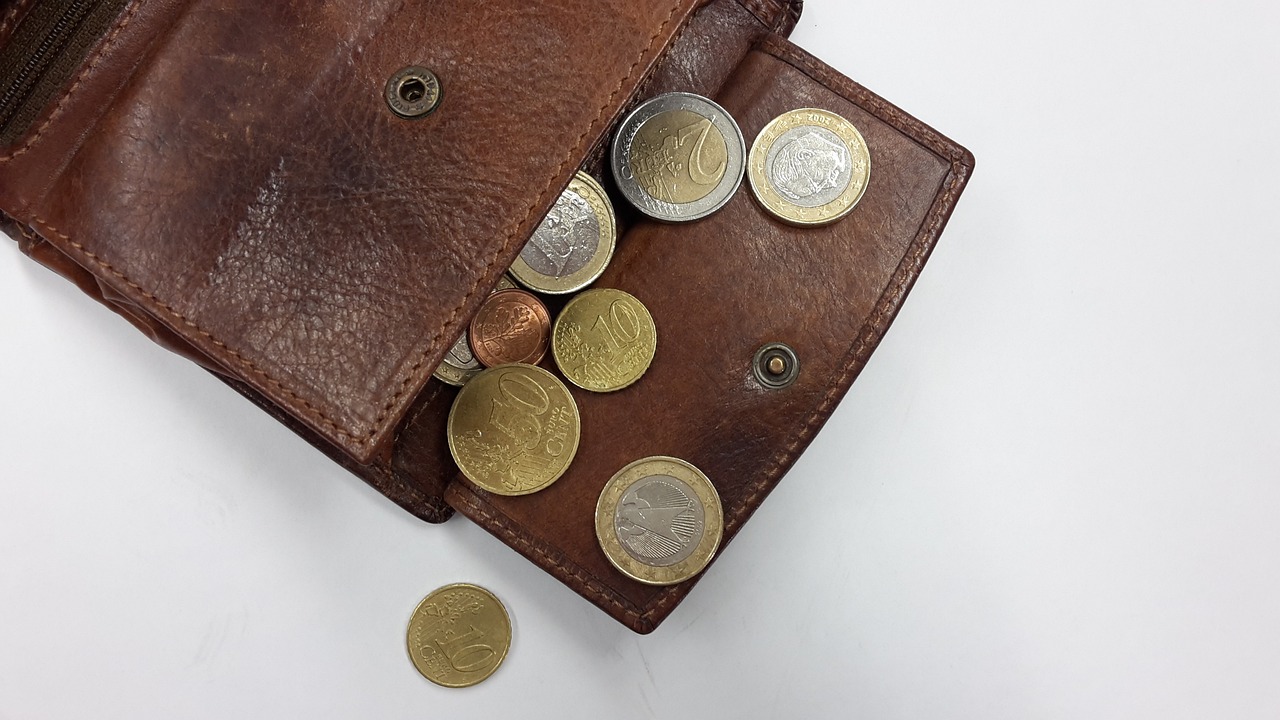
Encryption Technology
In today's digital age, where our personal information is often just a click away, serves as a crucial shield against unauthorized access. Imagine encryption as a secret code that only you and your digital wallet understand. When you enter your sensitive information, like credit card numbers or bank details, encryption scrambles that data into an unreadable format. Only authorized users, equipped with the right keys, can decrypt and access this information. This means that even if someone intercepts your data, it would look like a jumbled mess to them, protecting your privacy and security.
For non-tech savvy users, understanding how encryption works can feel daunting, but the good news is that they don’t need to be tech experts to benefit from it. The wallet applications handle all the complex processes behind the scenes, allowing users to focus on what truly matters: making transactions safely and efficiently. Most digital wallets employ advanced encryption standards, such as AES (Advanced Encryption Standard), which is widely recognized as one of the most secure encryption methods available.
Additionally, many digital wallets continuously update their encryption protocols to stay ahead of potential threats. This proactive approach is essential in a world where cyber threats are constantly evolving. To illustrate the importance of encryption, consider the following table that highlights key features associated with encryption technology in digital wallets:
| Feature | Description |
|---|---|
| Data Scrambling | Transforms readable data into an unreadable format to protect it from unauthorized access. |
| Secure Key Management | Manages encryption keys securely to ensure that only authorized users can access sensitive information. |
| Regular Updates | Frequent updates to encryption protocols to counteract emerging cybersecurity threats. |
| Compliance | Adheres to industry standards and regulations, ensuring a high level of security for users. |
By utilizing these advanced encryption technologies, digital wallets not only safeguard user data but also instill confidence in those who may be hesitant to adopt new technology. Non-tech savvy users can rest assured knowing that their financial information is protected by layers of security that work tirelessly to keep their data safe from prying eyes. In essence, encryption technology acts as a digital fortress, providing peace of mind that allows users to engage in transactions without the constant worry of fraud or theft.
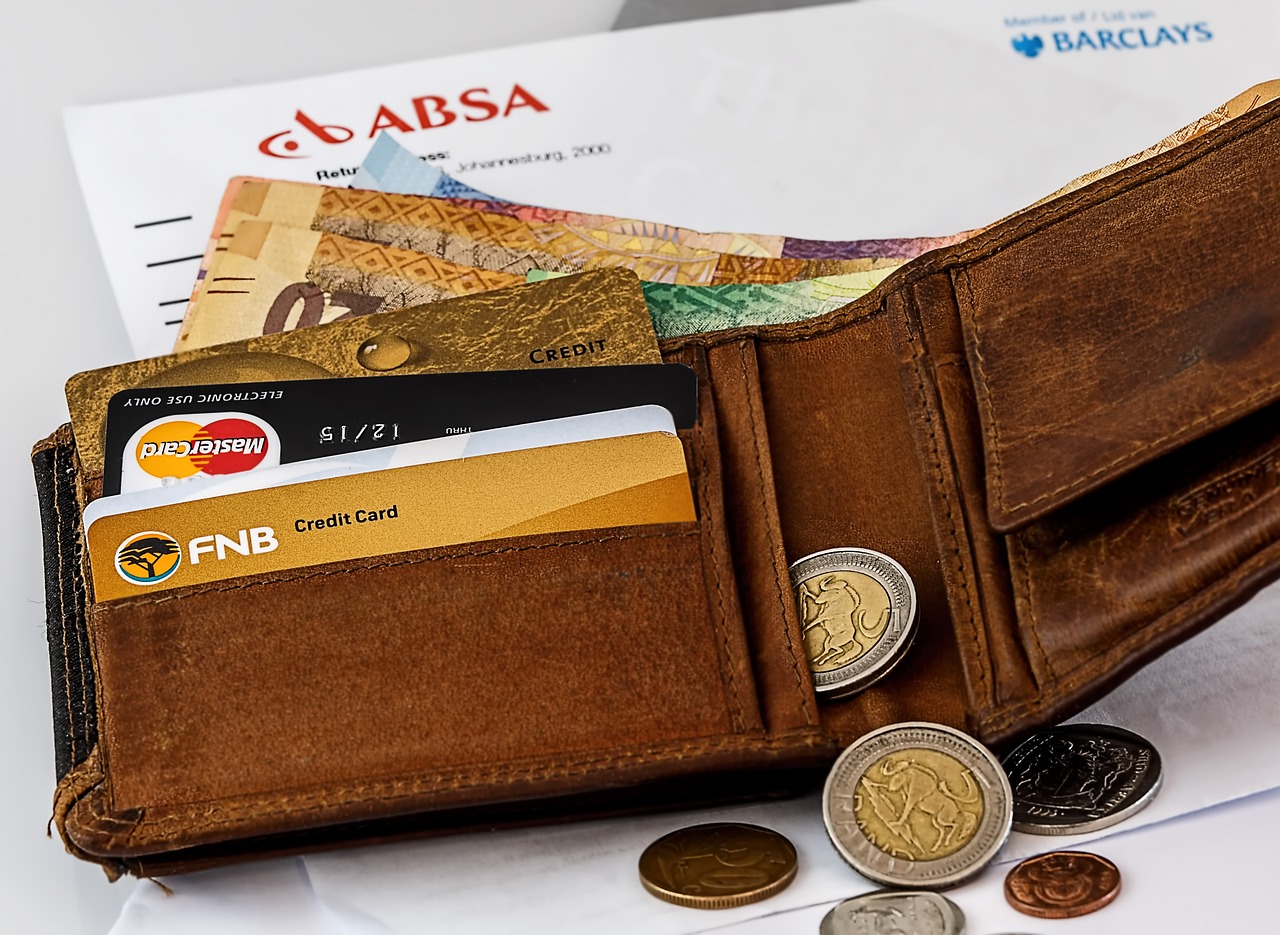
Two-Factor Authentication
In today's digital age, security is paramount, especially for those who may not be as tech-savvy. Two-Factor Authentication (2FA) is a powerful tool designed to enhance security and provide peace of mind for users when accessing their digital wallets. But what exactly is 2FA, and how does it work?
Simply put, Two-Factor Authentication adds an extra layer of security beyond just a password. When you log into your digital wallet, after entering your password, you are prompted to verify your identity through a second method. This could be a code sent to your mobile phone, a fingerprint scan, or even a facial recognition check. This additional step makes it significantly harder for unauthorized users to gain access to your account, even if they somehow manage to steal your password.
Here’s how it typically works:
- Step 1: Enter your username and password as usual.
- Step 2: Receive a unique code via SMS, email, or an authentication app.
- Step 3: Enter the code to gain access to your wallet.
This process not only secures your wallet but also empowers non-tech savvy users by simplifying the concept of security. Instead of just relying on a single password, which can be easily forgotten or compromised, users can feel more confident knowing that their financial information is protected by multiple layers of security.
Moreover, many digital wallets now offer user-friendly interfaces that guide you through setting up 2FA. This means that even if you're not particularly tech-savvy, you can easily enable this feature and significantly increase your account security. For those who may be hesitant about technology, it’s akin to locking your front door and then adding a deadbolt for extra safety—it's a simple step that dramatically enhances your security.
In conclusion, Two-Factor Authentication is a crucial feature that not only protects your digital wallet but also fosters a sense of security and confidence in users who might otherwise feel overwhelmed by technology. By implementing 2FA, you are taking a proactive step towards safeguarding your financial information, making it a must-have feature for anyone using a digital wallet.
- What is Two-Factor Authentication?
Two-Factor Authentication is a security process that requires two different forms of identification to access an account, enhancing security significantly. - How does 2FA improve security?
By requiring a second form of verification, 2FA makes it much harder for unauthorized users to access your account, even if they have your password. - Is 2FA difficult to set up?
Not at all! Most digital wallets provide straightforward instructions to enable 2FA, making it accessible even for those who aren't tech experts.

Biometric Verification
This article explores the advantages of using wallets for individuals who may not be familiar with technology, highlighting ease of use, security, and accessibility in daily transactions.
Digital wallets are applications that store payment information securely. They provide a convenient way for users to make transactions without needing to carry physical cash or cards, simplifying the payment process.
Wallets offer advanced security measures like encryption and biometric authentication. These features protect sensitive information, ensuring that non-tech savvy users can transact safely without worrying about fraud or theft.
Encryption technology ensures that user data is scrambled and unreadable to unauthorized parties. This protection is crucial for maintaining privacy and security in digital transactions, especially for those unfamiliar with tech.
Two-factor authentication adds an extra layer of security by requiring a second form of verification, like a text message code. This helps non-tech savvy users feel more secure when using digital wallets.
Biometric verification, such as fingerprint or facial recognition, simplifies the login process. Imagine walking up to your phone and simply using your fingerprint to unlock it—it's as easy as that! This technology not only enhances security but also makes the wallet experience incredibly user-friendly, especially for those who may feel overwhelmed by traditional password systems. With biometric verification, users can access their wallets quickly and securely, eliminating the need to remember complex passwords. This is particularly beneficial for non-tech savvy users who might find it challenging to navigate through multiple passwords and usernames.
Moreover, biometric verification is designed to be intuitive. For instance, when a user wants to make a payment, they can simply place their finger on the sensor or look at their device. This seamless process reduces friction and encourages users to engage with their digital wallets more frequently. In fact, studies show that users are more likely to adopt technology that feels natural and effortless. Here are some key benefits of biometric verification:
- Speed: Quick access means users can complete transactions faster.
- Security: Biometric data is unique to each person, making it harder for unauthorized users to gain access.
- User-Friendly: No need to remember passwords, making it ideal for those less comfortable with technology.
In conclusion, biometric verification not only enhances security but also fosters a sense of confidence among non-tech savvy users. By providing a straightforward and secure method of accessing their digital wallets, this technology bridges the gap between convenience and security, making financial transactions easier for everyone.
Digital wallets streamline payment processes, allowing users to complete transactions quickly. This convenience is especially beneficial for those who prefer simplicity over navigating complex payment systems.
Contactless payment options enable users to pay by simply tapping their device at a terminal. This feature is not only fast but also reduces the need for physical cash, appealing to non-tech savvy users.
Digital wallets allow users to store various payment methods, such as credit cards and bank accounts, in one place. This centralization simplifies managing finances and enhances the user experience.
Many wallets include features for budgeting and expense tracking, helping users manage their finances more effectively. This functionality is particularly valuable for non-tech savvy individuals looking to improve their financial literacy.
Some digital wallets offer options to set spending limits, allowing users to control their expenses. This feature encourages responsible spending habits, making it easier for users to stick to their budgets.
Access to transaction history helps users track their spending patterns. This information can be vital for non-tech savvy individuals aiming to understand their financial habits and make informed decisions.
Q: What is a digital wallet?
A: A digital wallet is an application that securely stores payment information and allows users to make transactions digitally without the need for physical cash or cards.
Q: Is it safe to use biometric verification?
A: Yes, biometric verification enhances security by using unique physical traits, making it difficult for unauthorized users to gain access to your wallet.
Q: How do I set up a digital wallet?
A: Setting up a digital wallet is typically straightforward. You need to download the app, create an account, and link your payment methods.
Q: Can I use my digital wallet for online shopping?
A: Absolutely! Digital wallets can be used for both in-store and online transactions, making them versatile for various shopping needs.

Easy Setup and Usage
This article explores the advantages of using wallets for individuals who may not be familiar with technology, highlighting ease of use, security, and accessibility in daily transactions.
Digital wallets are applications that store payment information securely. They provide a convenient way for users to make transactions without needing to carry physical cash or cards, simplifying the payment process.
Wallets offer advanced security measures like encryption and biometric authentication. These features protect sensitive information, ensuring that non-tech savvy users can transact safely without worrying about fraud or theft.
Encryption technology ensures that user data is scrambled and unreadable to unauthorized parties. This protection is crucial for maintaining privacy and security in digital transactions, especially for those unfamiliar with tech.
Two-factor authentication adds an extra layer of security by requiring a second form of verification, like a text message code. This helps non-tech savvy users feel more secure when using digital wallets.
Biometric verification, such as fingerprint or facial recognition, simplifies the login process. It allows users to access their wallets quickly and securely, making it user-friendly for those less comfortable with technology.
Setting up a digital wallet is often straightforward, requiring minimal technical knowledge. Most wallets provide intuitive interfaces that guide users through the setup process step by step. For instance, after downloading the app, users typically need to create an account by entering their email address and creating a password. This simplicity encourages adoption among non-tech savvy individuals, allowing them to manage their finances effortlessly.
Once the account is created, users can link their bank accounts or credit cards with just a few taps. Many wallets offer tutorials or help sections within the app, making it easy for users to understand how to navigate the features without feeling overwhelmed. The design is often user-centric, focusing on large buttons and clear instructions that make the experience enjoyable rather than frustrating.
Furthermore, the ease of usage extends beyond the setup phase. Digital wallets typically allow users to make payments in a matter of seconds. Imagine walking into a coffee shop, ordering your favorite drink, and simply tapping your phone to pay—no fumbling for cash or cards required! This level of convenience is especially appealing to those who may not be tech-savvy, as it removes the barriers often associated with traditional payment methods.
Digital wallets streamline payment processes, allowing users to complete transactions quickly. This convenience is especially beneficial for those who prefer simplicity over navigating complex payment systems.
Contactless payment options enable users to pay by simply tapping their device at a terminal. This feature is not only fast but also reduces the need for physical cash, appealing to non-tech savvy users.
Digital wallets allow users to store various payment methods, such as credit cards and bank accounts, in one place. This centralization simplifies managing finances and enhances the user experience.
Many wallets include features for budgeting and expense tracking, helping users manage their finances more effectively. This functionality is particularly valuable for non-tech savvy individuals looking to improve their financial literacy.
Some digital wallets offer options to set spending limits, allowing users to control their expenses. This feature encourages responsible spending habits, making it easier for users to stick to their budgets.
Access to transaction history helps users track their spending patterns. This information can be vital for non-tech savvy individuals aiming to understand their financial habits and make informed decisions.
- What is a digital wallet?
A digital wallet is an application that allows users to store payment information securely and make transactions without physical cash or cards.
- Are digital wallets safe for non-tech savvy users?
Yes, digital wallets come with enhanced security features such as encryption and biometric verification, making them safe for all users.
- How easy is it to set up a digital wallet?
Setting up a digital wallet is usually straightforward, requiring minimal technical knowledge, and many apps provide guidance throughout the process.
- Can I track my spending with a digital wallet?
Yes, many digital wallets include budgeting and expense tracking features that help users manage their finances effectively.
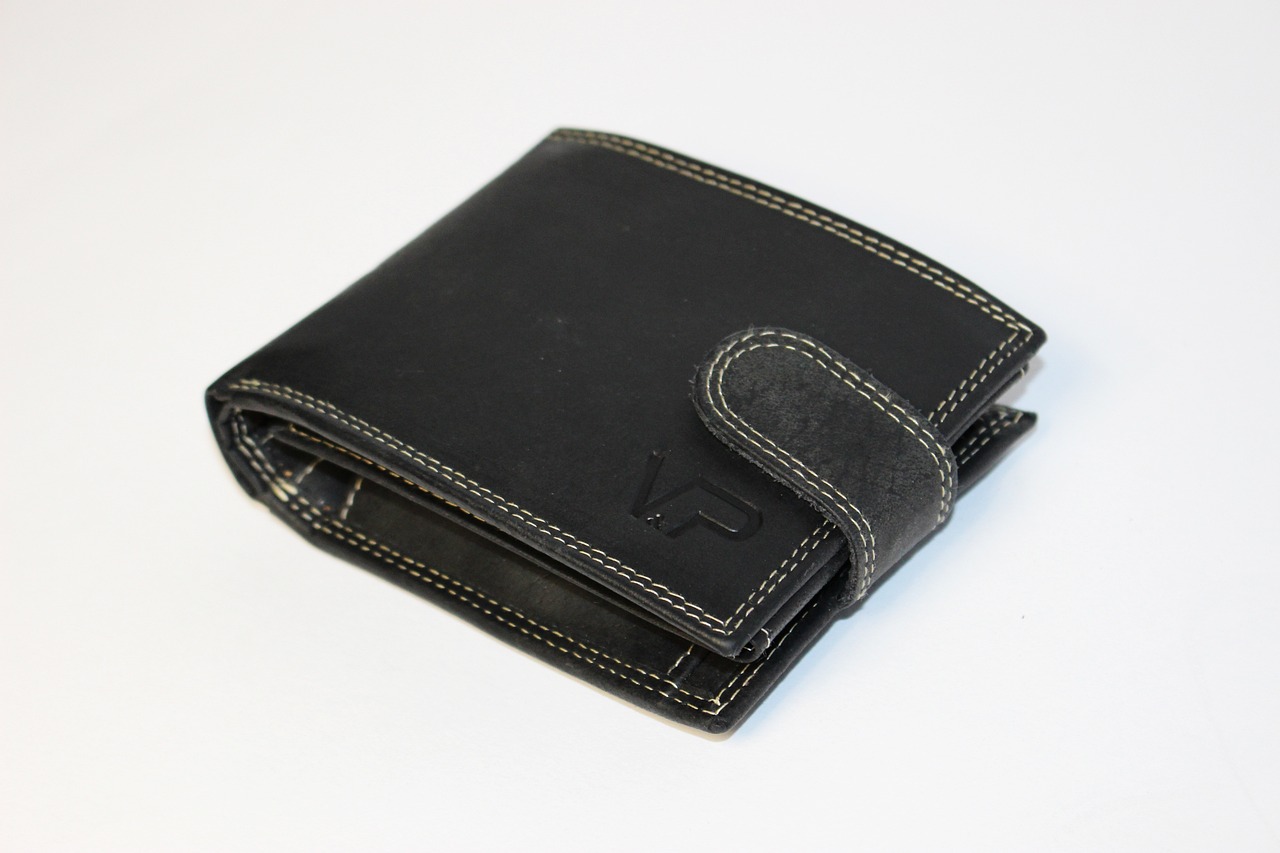
Convenience in Transactions
In our fast-paced world, convenience is king, and digital wallets are leading the charge in making transactions easier than ever. Imagine walking into a store, grabbing your favorite snack, and paying for it without fumbling through your pockets for cash or cards. Sounds dreamy, right? Well, that’s the beauty of digital wallets. They streamline the payment process, allowing users to complete transactions quickly and efficiently, which is especially appealing for those who prefer simplicity over navigating complex payment systems.
One of the standout features of digital wallets is contactless payments. With just a simple tap of your device at a payment terminal, you can finalize your purchase in seconds. This not only speeds up the checkout process but also minimizes the need for physical cash, which can be a hassle to carry around. For non-tech savvy users, this feature is a game changer. It eliminates the anxiety of dealing with coins or cash, making the payment experience much smoother and more enjoyable.
Moreover, digital wallets allow users to store multiple payment methods in one convenient place. Whether it’s credit cards, debit cards, or even bank accounts, having everything centralized means you can manage your finances without the headache of juggling different cards. This centralization not only simplifies the payment process but also enhances the overall user experience. Imagine never having to search for your wallet again—everything you need is right at your fingertips!
Let’s not forget about the added benefit of transaction history. Digital wallets keep track of every transaction you make, which can be incredibly helpful for budgeting and managing your finances. Users can easily review their spending patterns, helping them to make informed decisions moving forward. For those who might not be comfortable with technology, this feature provides a sense of control over their finances without needing to delve into complex spreadsheets or financial apps.
To summarize, the convenience offered by digital wallets can be broken down into a few key points:
- Speed: Quick and easy transactions with contactless payments.
- Centralization: Store multiple payment methods in one place.
- Tracking: Access to transaction history for better financial management.
In essence, digital wallets are designed to make life easier, especially for those who might feel overwhelmed by traditional payment methods. They offer a seamless way to navigate daily transactions while providing the necessary tools to manage finances effectively. So, why not embrace the future of payments? With digital wallets, convenience is just a tap away!
1. What is a digital wallet?
A digital wallet is an application that securely stores payment information, allowing users to make transactions without carrying physical cash or cards.
2. Are digital wallets safe to use?
Yes, digital wallets incorporate advanced security features like encryption and biometric authentication to protect user information.
3. How do I set up a digital wallet?
Setting up a digital wallet is usually straightforward. You just need to download the app, create an account, and link your payment methods.
4. Can I use a digital wallet for online purchases?
Absolutely! Digital wallets can be used for both in-store and online purchases, making them versatile for all types of transactions.
5. What if I forget my digital wallet password?
Most digital wallets have recovery options in place, allowing you to reset your password through your email or phone number.
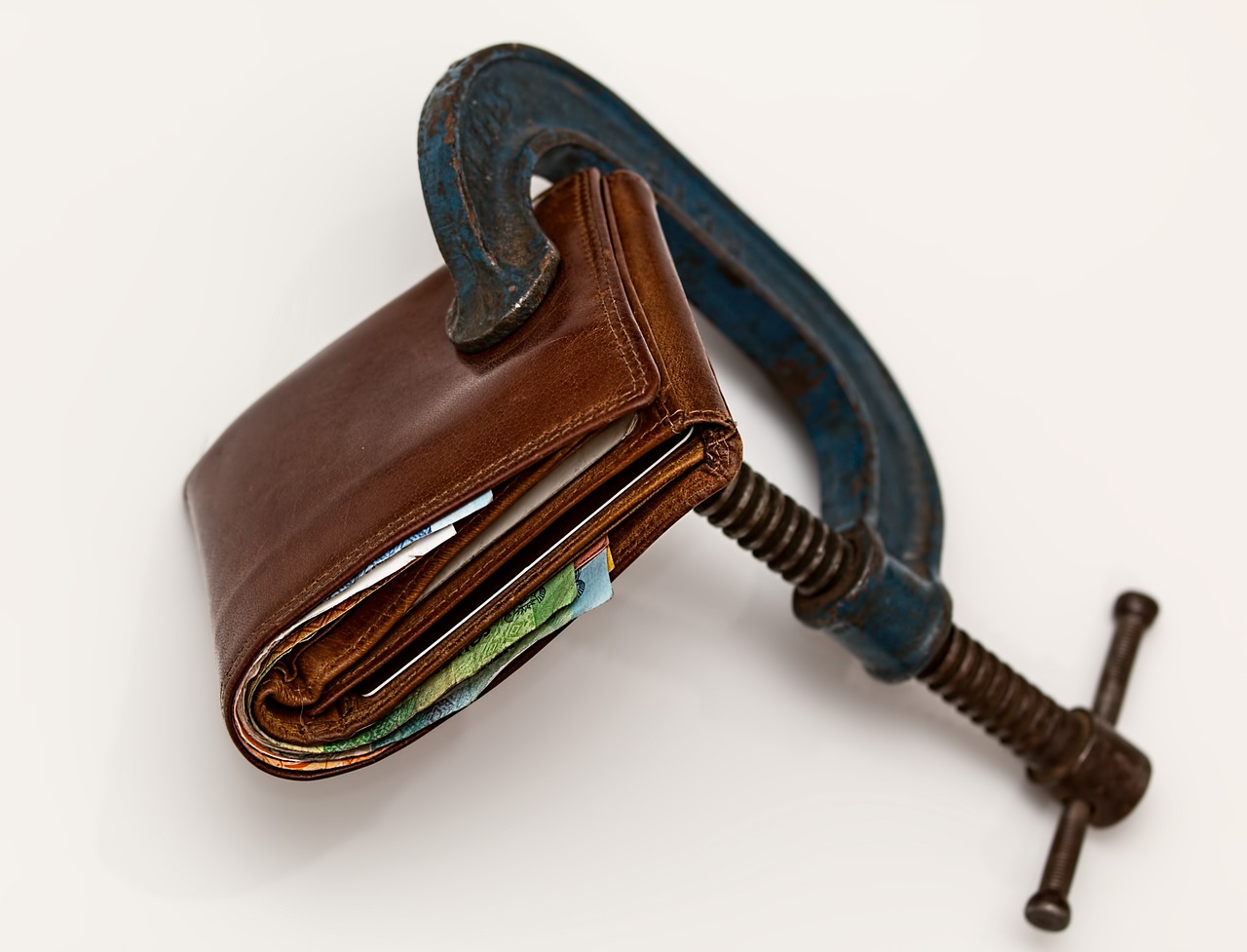
Contactless Payments
Imagine walking into your favorite coffee shop, and instead of fumbling through your wallet for cash or cards, you simply tap your smartphone on the payment terminal. That’s the magic of ! This innovative payment method has revolutionized the way we handle transactions, making it incredibly easy and fast. For non-tech savvy users, the appeal of contactless payments lies in their simplicity and efficiency. You don’t need to worry about complicated procedures; just a quick tap, and you’re done!
Contactless payments utilize Near Field Communication (NFC) technology, which allows your device to communicate with the payment terminal without the need for physical contact. This means you can make purchases without taking out your card or cash, which is not only convenient but also hygienic, especially in today’s world where health concerns are paramount. It’s like having a magic wand that grants you instant access to your favorite treats – just wave it, and voilà!
Here are some key benefits of using contactless payments:
- Speed: Transactions are completed in seconds, allowing you to skip long lines.
- Convenience: No need to dig through your wallet; your payment method is always at your fingertips.
- Safety: Since you don’t have to hand over your card or cash, there’s less risk of theft.
For those who may not be familiar with technology, using contactless payments can feel like stepping into the future. It’s all about embracing simplicity. Just think of it as a new way to pay, similar to how we transitioned from writing checks to using debit cards. The learning curve is minimal, and once you get the hang of it, you’ll wonder how you ever lived without it!
Moreover, contactless payments are not just limited to smartphones. Many digital wallets allow you to link your credit or debit cards, and with a simple tap, you can pay for groceries, coffee, or even your morning commute. It’s a seamless experience that enhances your daily transactions, making life just a bit easier. In a world where time is money, wouldn’t you want a payment method that saves both?

Storing Multiple Payment Methods
One of the most significant advantages of using digital wallets is their ability to store multiple payment methods in one convenient location. Imagine having all your financial tools neatly organized in a single app, eliminating the need to fumble through your wallet or purse for various cards. Whether it’s credit cards, debit cards, or even loyalty cards, digital wallets allow users to manage these effortlessly. This feature is particularly beneficial for non-tech savvy individuals, as it simplifies the often overwhelming task of keeping track of different payment methods.
With a digital wallet, users can add, remove, or update their payment methods with just a few taps on their devices. This ease of management encourages users to keep their payment information current, reducing the risk of failed transactions due to expired cards or outdated information. Additionally, the centralized nature of digital wallets means that users can quickly switch between different payment options based on their preferences or the specific transaction they are making.
Here’s a quick overview of the types of payment methods you can typically store in a digital wallet:
- Credit Cards: Easily add your primary credit cards for quick access.
- Debit Cards: Link your bank accounts to make seamless payments.
- Loyalty Cards: Store your store loyalty cards to earn rewards without carrying physical cards.
- Gift Cards: Keep all your gift cards in one place for easy redemption.
This feature not only streamlines the payment process but also enhances the overall user experience. For instance, when shopping online, users can select their preferred payment method without needing to enter card details repeatedly. This convenience can significantly reduce the time spent on transactions, making it an attractive option for those who value efficiency.
Furthermore, as more merchants adopt digital payment systems, the ability to store multiple payment methods becomes an essential tool for anyone looking to simplify their financial interactions. It’s like having a personal financial assistant right in your pocket, ready to help you navigate through various payment scenarios without the usual hassle. So, whether you're at a café, shopping online, or paying for a service, having all your payment options readily available makes life a whole lot easier!
- What types of payment methods can I store in a digital wallet?
You can store credit cards, debit cards, loyalty cards, and even gift cards in a digital wallet, making it a versatile tool for managing your finances. - Are digital wallets safe to use?
Yes, digital wallets come with enhanced security features like encryption and biometric verification, ensuring that your payment information is protected. - How do I set up a digital wallet?
Setting up a digital wallet is generally straightforward. You simply download the app, create an account, and start adding your payment methods. - Can I use my digital wallet for online shopping?
Absolutely! Digital wallets are widely accepted for online transactions, allowing for quick and secure payments.
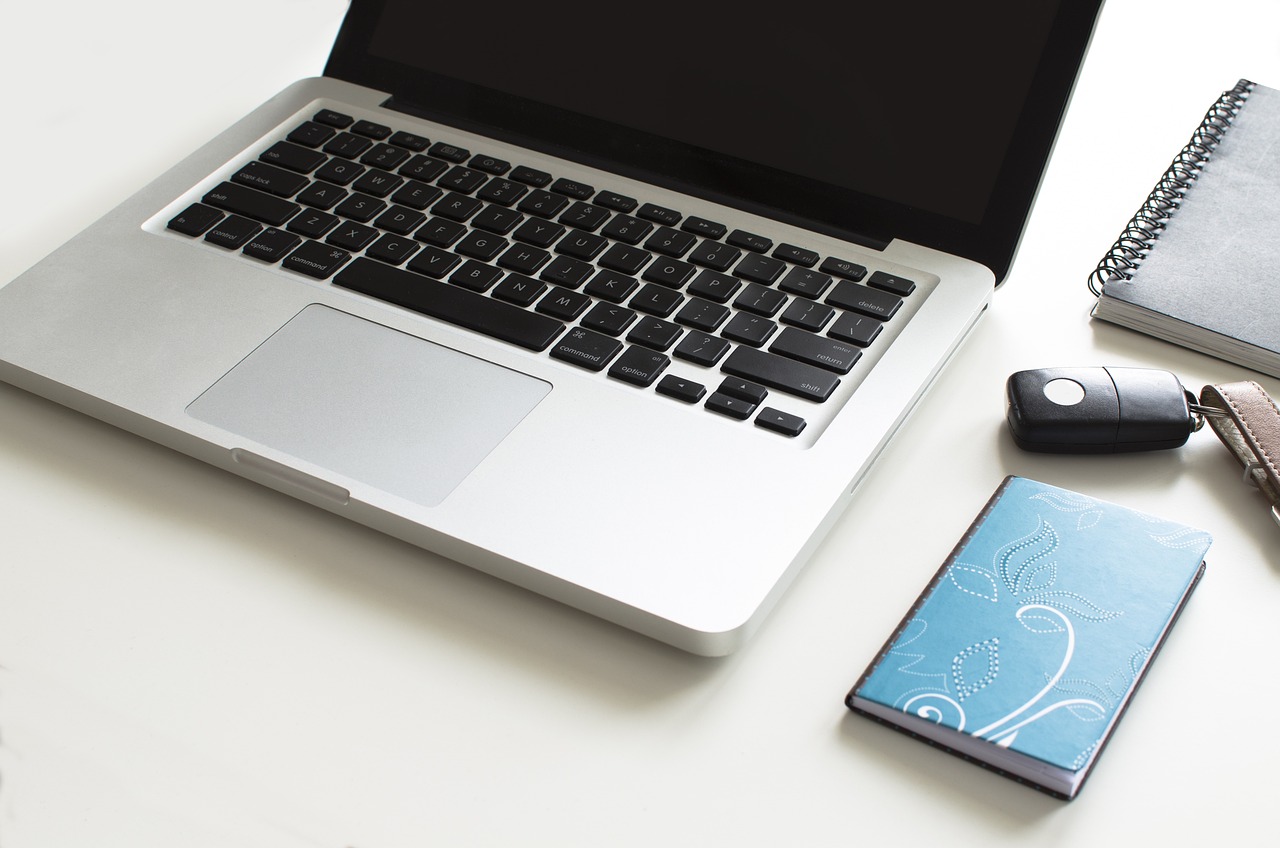
Budgeting and Expense Tracking
In today's fast-paced world, managing finances can feel like trying to catch smoke with your bare hands. Fortunately, digital wallets are stepping in to simplify this process, especially for those who may not be tech-savvy. Many digital wallets come equipped with features that assist users in budgeting and tracking their expenses, making it easier to maintain control over their financial health. Imagine being able to glance at your wallet and instantly see where your money is going—sounds like a dream, right?
One of the most appealing aspects of these wallets is their ability to help users set spending limits. This feature is particularly beneficial for non-tech-savvy individuals who may struggle with keeping their finances in check. By establishing a budget within the wallet, users can receive notifications when they approach their limits, thereby promoting responsible spending habits. It’s like having a financial coach right in your pocket, guiding you toward smarter choices.
Additionally, digital wallets often provide a comprehensive transaction history that allows users to track their spending patterns over time. This feature is invaluable for those looking to understand their financial habits better. With just a few taps, users can categorize their expenses—be it groceries, entertainment, or utilities—giving them a clear picture of where their money is going. For instance, a user might discover they are spending more on dining out than they realized, prompting them to make adjustments accordingly.
To illustrate the impact of budgeting features, consider the following table that outlines common features found in digital wallets:
| Feature | Description |
|---|---|
| Spending Limits | Allows users to set and manage monthly spending caps for specific categories. |
| Transaction History | Provides a detailed record of all transactions, helping users track their expenses over time. |
| Expense Categorization | Enables users to categorize their spending, making it easier to identify trends and areas for improvement. |
| Budget Alerts | Sends notifications when users are nearing their set spending limits, promoting mindful spending. |
For those who are not particularly tech-savvy, the idea of budgeting might seem daunting. However, the user-friendly interfaces of most digital wallets make it a breeze. With straightforward navigation and intuitive designs, even the most technologically challenged individuals can easily set up their budgets and start tracking their expenses. It's about making financial management accessible and less intimidating.
In conclusion, budgeting and expense tracking features in digital wallets not only empower users to take charge of their finances but also foster a sense of financial literacy that can be life-changing. By utilizing these tools, non-tech-savvy individuals can transform their financial habits, leading to a more secure and stress-free financial future.
- What is a digital wallet? A digital wallet is an application that securely stores payment information, allowing users to make transactions without carrying physical cash or cards.
- How do digital wallets enhance security? They utilize encryption, biometric verification, and two-factor authentication to protect sensitive user information.
- Can I track my expenses with a digital wallet? Yes, many digital wallets offer features for budgeting and expense tracking, helping users manage their finances effectively.
- Are digital wallets easy to set up? Yes, most digital wallets have a straightforward setup process that requires minimal technical knowledge.
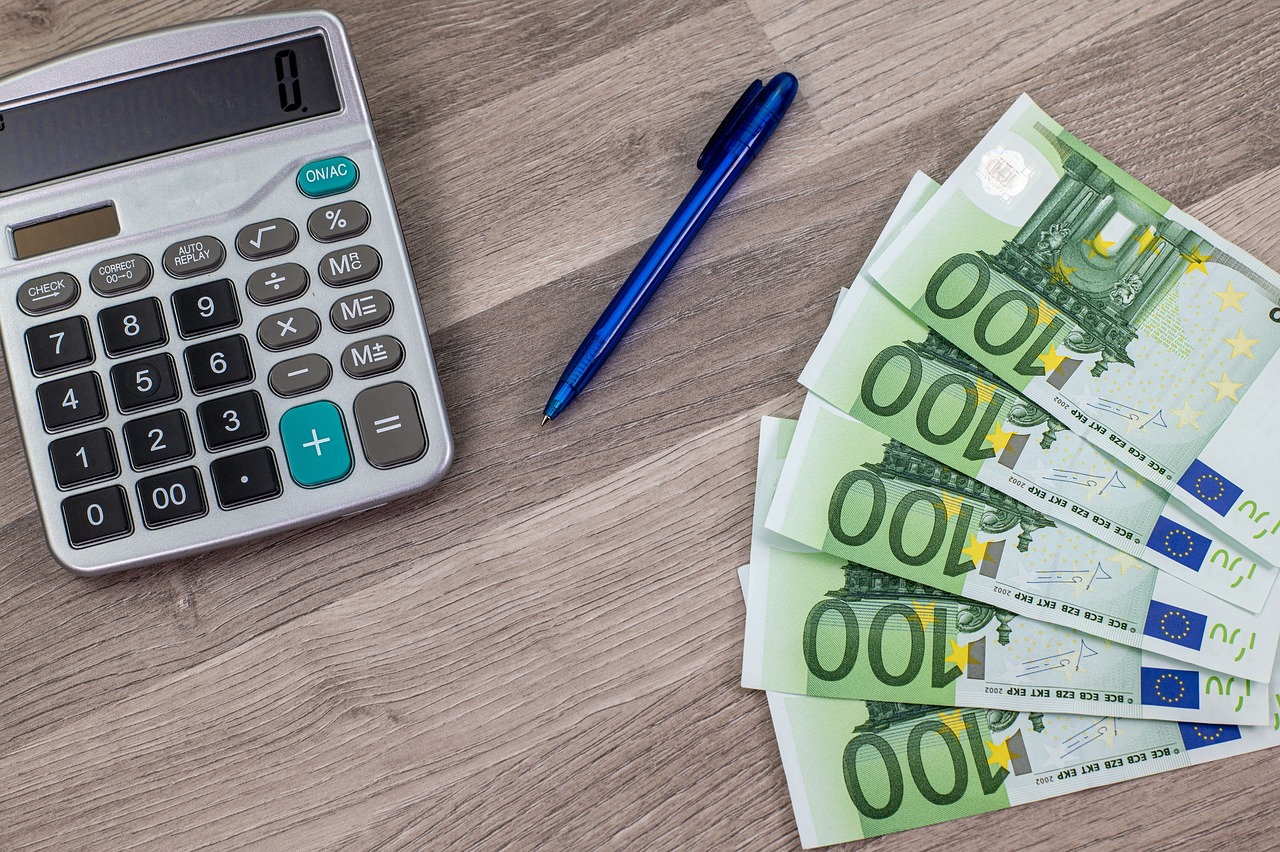
Setting Spending Limits
One of the most appealing features of digital wallets is the ability to set spending limits, which is a game-changer for anyone looking to manage their finances better. Imagine having a personal finance assistant right in your pocket, guiding you to make smarter spending choices. With this feature, users can establish a maximum amount they are willing to spend within a specific timeframe, such as daily, weekly, or monthly limits. This not only helps in keeping expenses in check but also fosters a sense of discipline that can be invaluable in today's consumer-driven world.
For non-tech savvy users, the process of setting these limits is typically intuitive and user-friendly. Most digital wallets present this option clearly in their settings menu, often accompanied by simple prompts that guide users through the process. Users can easily adjust their limits based on their financial goals or changing circumstances, making it a flexible tool for managing finances.
To illustrate how spending limits work, consider the following example:
| Timeframe | Spending Limit | Remaining Balance |
|---|---|---|
| Daily | $50 | $30 |
| Weekly | $300 | $150 |
| Monthly | $1200 | $800 |
In the table above, you can see how setting different spending limits can help users monitor their financial health. If a user has a daily limit of $50 but only spends $20, they will have $30 left for the day. This kind of real-time tracking empowers users to make informed choices, minimizing the chances of overspending and encouraging them to stick to their budgets.
Moreover, many digital wallets send notifications when users approach their set spending limits. This feature acts as a gentle reminder, nudging users to reconsider their purchases before they hit their limits. It’s like having a financial guardian angel watching over your expenses, ensuring that you remain within your budget without feeling overwhelmed.
In conclusion, the ability to set spending limits in digital wallets is not just a feature; it's a powerful tool that can lead to better financial habits. By giving users the control to dictate how much they want to spend, digital wallets make managing finances less daunting and more accessible, especially for those who may not be as comfortable navigating the complexities of modern financial tools.
- How do I set spending limits in my digital wallet? Most wallets have a straightforward process in the settings menu. Look for options related to budgeting or spending limits.
- Can I adjust my spending limits? Yes! You can adjust your limits at any time based on your financial situation or goals.
- What happens if I exceed my spending limit? Many wallets will notify you when you're close to your limit, helping you avoid overspending.
- Are spending limits effective for everyone? While they can be beneficial, individual experiences may vary. It’s important to find a system that works for you.

Transaction History
Access to is one of the most valuable features of digital wallets, especially for those who may not be tech-savvy. Imagine having a personal accountant right in your pocket, ready to show you where your money is going at a moment's notice. With just a few taps, users can view a detailed record of their spending activities, helping them to track their finances more effectively. This feature is not just about knowing how much you spent; it’s about understanding your spending patterns and making informed decisions.
For non-tech savvy individuals, the ability to see a clear, organized list of transactions can be a game-changer. It allows users to categorize their expenditures, whether it’s for groceries, dining out, or entertainment. This categorization can be presented in a visually appealing way, often with graphs and charts that make it easier to digest. For instance, many digital wallets will provide a summary of monthly spending, breaking it down into different categories:
| Category | Amount Spent |
|---|---|
| Groceries | $300 |
| Dining Out | $150 |
| Entertainment | $100 |
| Utilities | $200 |
This type of information helps users pinpoint where they might be overspending and encourages smarter financial habits. For example, if someone notices they are spending a lot on dining out, they might decide to cook more at home, thereby saving money.
Additionally, many digital wallets allow users to search through their transaction history by date or amount, making it easy to find specific purchases. This feature is particularly useful for budgeting purposes or when preparing for tax season. Users can quickly access their transaction history, which can be a lifesaver when they need to provide proof of expenses or check for discrepancies.
In summary, having access to transaction history within a digital wallet not only empowers non-tech savvy users to take control of their finances, but it also fosters a greater understanding of their spending habits. This feature transforms the often daunting task of financial management into a simple, straightforward process, making it an essential tool for anyone looking to improve their financial literacy.
- What is a digital wallet? A digital wallet is an application that securely stores payment information and allows users to make transactions without physical cash or cards.
- How secure are digital wallets? Digital wallets use advanced security features such as encryption, biometric verification, and two-factor authentication to protect user data.
- Can I track my spending with a digital wallet? Yes! Most digital wallets provide transaction history and budgeting tools to help users manage their finances.
- Are digital wallets easy to set up? Absolutely! Setting up a digital wallet typically requires minimal technical knowledge, making it accessible for everyone.
Frequently Asked Questions
- What is a digital wallet?
A digital wallet is an application that securely stores your payment information, allowing you to make transactions without the need for physical cash or cards. It's like having your wallet right on your phone!
- Are digital wallets safe to use?
Absolutely! Digital wallets come equipped with advanced security features like encryption and biometric authentication, which protect your sensitive information from unauthorized access. It's like having a personal bodyguard for your money!
- How do I set up a digital wallet?
Setting up a digital wallet is usually a breeze! You just need to download the app, create an account, and link your payment methods. Most of the time, it takes just a few minutes, even if you're not tech-savvy!
- Can I use my digital wallet for contactless payments?
Yes! One of the coolest features of digital wallets is the ability to make contactless payments. Just tap your device at a payment terminal, and you're good to go—no need to fumble with cash or cards!
- How can a digital wallet help me budget my expenses?
Many digital wallets have built-in budgeting tools that allow you to track your spending and set limits. This makes it easier to manage your finances and stick to your budget, even if you're new to financial planning.
- What if I forget my password for my digital wallet?
No worries! Most digital wallets offer password recovery options, and many also use biometric verification, like fingerprint or facial recognition, to help you log in securely without remembering complex passwords.
- Can I store multiple payment methods in one digital wallet?
Definitely! Digital wallets allow you to store various payment methods, such as credit cards and bank accounts, all in one place. This centralization makes managing your finances a piece of cake!
- Are digital wallets user-friendly for non-tech savvy individuals?
You bet! Digital wallets are designed with simplicity in mind, making them accessible for everyone. The straightforward setup and user-friendly interfaces help even the most tech-challenged individuals navigate their finances with ease.



















